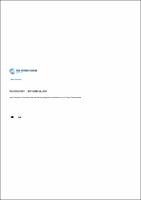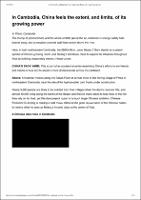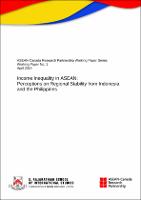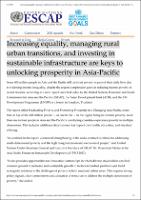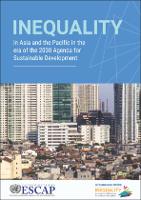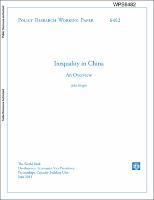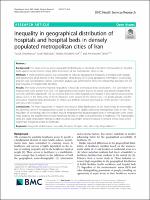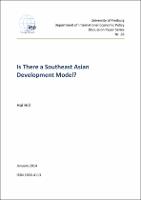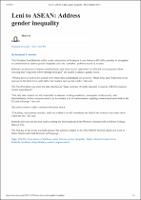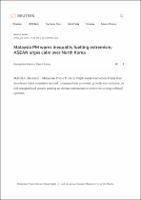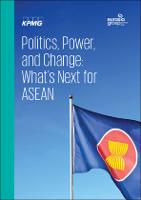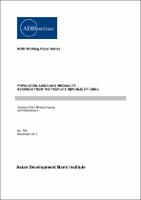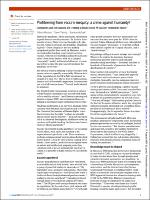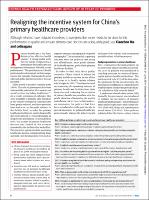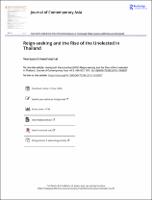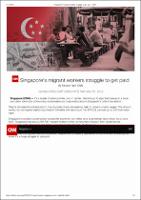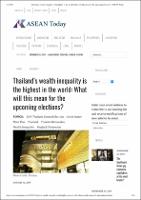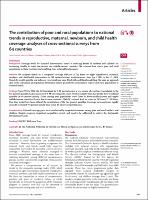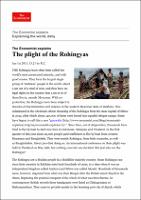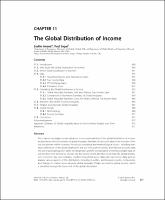Browsing 1.03.02 Economic, Social & Political Context by Title
Now showing items 24-43 of 48
-
How Countries in Southeast Asia are Working Together to Accelerate Human Capital Development
(THE WORLD BANK, 2019) -
In Cambodia, China feels the extent, and limits, of its growing power
(Washington post, 2015) -
Income Inequality in ASEAN: Perceptions on Regional Stability from Indonesia and the Philippines
Income inequality has been a growing concern since Global Financial Crisis. But how do regional institutions contribute to the debate on income equality? ASEAN’s normative framework is underpinned by the principle of non-interference while ASEAN has a mandate to establish an equitable economic community post 2015. This study examines if regional income inequality is considered a regional problem, and if so, is the concern significant enough to overcome the principle of non-interference allowing ASEAN to play a greater role in policy formation. ... -
Inequality in Asia and the Pacific in the era of the 2030 Agenda for Sustainable Development
(United Nations, 2018)
This publication reviews the region's inequality trends, challenges and achievements and identifies policy gaps across the three dimensions of inequality--inequality of outcome, inequality of opportunity and inequality of impact. It also discusses the potential impact of rapid and disruptive technological advances, such as machine learning, and puts forward a broad set of policy recommendations for reducing all forms of inequality for the effective implementation of the 2030 Agenda for Sustainable Development and its core tenant of "leaving no ... -
Inequality in China
(Oxford University Press, 2014-10-30)
This paper provides an overview of research on income inequality in China over the period of economic reform. It presents the results of two main sources of evidence on income inequality and, assisted by various decompositions, explains the reasons income inequality has increased rapidly and the Gini coefficient is now almost 0.5. This paper evaluates the degree of income inequality from the perspectives of people’s subjective well-being and government concerns. It poses the following question: has income inequality peaked? It also discusses the ... -
Inequality in geographical distribution of hospitals and hospital beds in densely populated metropolitan cities of Iran
(BMC Health Serv Res, 2019-12)
Background: This study aims to assess geographical distribution of hospitals and extent of inequalities in hospital beds against socioeconomic status (SES) of residents of five metropolitan cities in Iran. Methods: A cross-sectional analysis was conducted to measure geographical inequality in hospital and hospital bed distributions of 68 districts in five metropolitan cities during 2016 using geographic information system (GIS), and Gini and Concentration indices. Correlation analysis was performed to show the relationship between the SES and ... -
Is There a Southeast Asian Development Model?
(Department of International Economic Policy Institute for Economic Research University of Freiburg, 2014)
The 10 states of Southeast Asia have combined to form the developing world’s most successful and durable regional grouping, the Association of Southeast Asian Na-tions, ASEAN. Economic integration among them is high and increasing. The ambi-tious ASEAN Economic Community is scheduled to take effect from December 2015, and should further accelerate this integration. But the socio-economic and institution-al disparities among them are also very large. This paper therefore asks the ques-tion, does it make sense to contemplate a ‘Southeast Asian ... -
Leni to ASEAN: Address gender inequality
(Manila Bulletin News, 2017-11-07) -
Malaysia PM warns inequality fuelling extremism; ASEAN urges calm over North Korea
(Reuter, 2017-04-28) -
Politics, Power, and Change
(KPMG)
There are 10 varied and challenging national storylines unfolding in ASEAN – and businesses need to join these conversations. Juggling the many demands of an increasingly complex stakeholder universe – from consumers to politicians, regulators to society at large – will require an understanding of the wide array of domestic and regional political risks in ASEAN. While there are some challenges that are common to many countries in ASEAN, the level of risk and trend direction vary. There are several questions on geo-strategy in the region: Will ... -
Population Aging and Inequality: Evidence from the People’s Republic of China
Population aging has significant economic and social costs, and this paper studies its impacts on inequality, both theoretically and empirically. First, we build a two-period overlapping-generation model with an uncertain lifetime and find that population aging has the overall effect of increasing income and consumption inequality within the society. For the empirical analysis, we use household data from the China Health and Nutrition Survey to assess the age effect on income and consumption inequality in the People’s Republic of China and confirm ... -
Profiteering from vaccine inequity: a crime against humanity?
(BMJ, 2021-08-16) -
Realigning the incentive system for China’s primary healthcare providers
(BMJ, 2019-06-21) -
Reign-seeking and the Rise of the Unelected in Thailand
(Journal of Contemporary Asia, 2016)
This article develops the concept of “reign-seeking” to capture the unprecedented collective action of the Thai professional and official elite prior to the 2014 military coup and the establishment of a military regime. It argues that this phenomenon reflects broad and deep political dynamics, for which the dominant scholarship on authoritarianism and Thai politics cannot adequately explain. The changing incentives of these supposedly non-partisan actors are interwoven with neo-liberal governance reform driven by a desire for depoliticisation and ... -
Singapore's migrant workers struggle to get paid
(CNN, 2018) -
Thailand’s wealth inequality is the highest in the world: What will this mean for the upcoming elections?
(United Nation ESCAP, 2019-01-16) -
The contribution of poor and rural populations to national trends in reproductive, maternal, newborn, and child health coverage: analyses of cross-sectional surveys from 64 countries
(The Lancet Global Health, 2017)
Background Coverage levels for essential interventions aimed at reducing deaths of mothers and children are increasing steadily in most low-income and middle-income countries. We assessed how much poor and rural populations in these countries are benefiting from national-level progress. -
The Economist explains_ The plight of the Rohingyas
(The Economist, 2015) -
The Global Distribution of Income
(Elsevier, 2015)
This chapter investigates recent advances in our understanding of the global distribution of income, and produces the first estimates of global inequality that take into account data on the incomes of the top one percent within countries. We discuss conceptual and methodological issues – including alternative definitions of the global distribution, the use of household surveys and national accounts data, the use of purchasing power parity exchange rates, and the incorporation of recently available data on top incomes from income tax records. We ...

